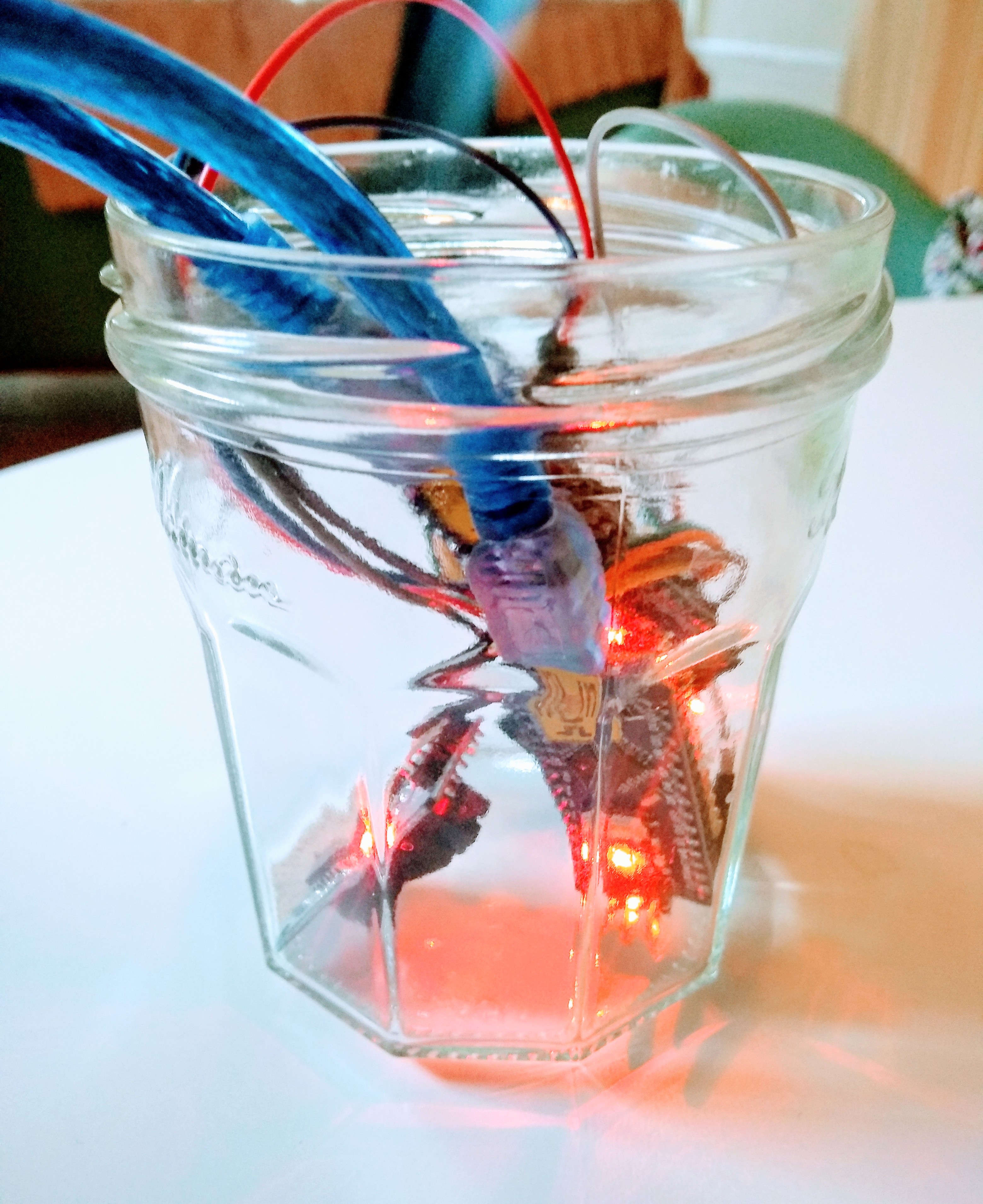tile is a simple API for time-locked encryption (aka timed-release encryption). tile publishes X25519 public keys, and also the corresponding private keys, but only after a predefined date in the future.
tile is very easy to use.
Retrieve a public key
curl -s \
-d '{"reveal_not_before": "2020-08-21T18:25:43.511Z",
"keyring_label": "2020-08-20_mushroom-paradox"}' \
-H "Content-Type: application/json" \
-X POST \
https://tile-experimental.cryptographic.services:8082/v0/public_key \
| jqThe parameters of the request are:
keyring_label. See table below for possible values.reveal_not_before. An approximate time for disclosing the corresponding private key.
Typical successful response
{
"data": {
"key_serial": 1598034600,
"keyring_label": "2020-08-20_mushroom-paradox",
"public_key": "bNhrEUObdoBbzeFsdb+W5bj/S6LwSr1nESb5b35wdWY=",
"reveal_after": "2020-08-21T18:30:00+00:00Z"
}
}- The
public_keyfield is the base64 representation of a X25519 public key, suitable for use with libsodium or NaCl. - The
reveal_afterfield is the "rounded up" version of the passedreveal_not_beforeparameter. - The
key_serialis an identifier that can be used to retrieve the corresponding private key whenever is available.
The public keys are also available as a batch in this folder.
Retrieve a private key
curl -s \
-d '{"key_serial": "1598034600", "keyring_label":"2020-08-20_mushroom-paradox"}' \
-H "Content-Type: application/json" \
-X POST \
https://tile-experimental.cryptographic.services:8082/v0/private_key \
| jqTypical successful response:
{
"data": {
"key_serial": 1598034600,
"keyring_label": "2020-08-20_mushroom-paradox",
"private_key": "Bd5ZOhlg5DRiKwXTK5fVnfYvlyy6MweSqcch1goZC7Q=",
"reveal_after": "2020-08-21T18:30:00+00:00Z"
}
}If you ask for a key not yet revealed you'll get this response:
{
"error": {
"code": "400",
"message": "key not yet revealed"
}
}tile is dead simple. The current version of tile uses bread and butter crypto. Key storage and private key computation happens on a small STM32 microcontroller behind a data diode and without external access. Meaning, it won't be easy for you to hack it from your couch! The STM32 uses a GPS module to keep track of time. A raspberry pi is used as a gateway to the wild internet.
Data diodes are a very nice primitive. A data diode partitions the system into two domains: trusted (A) and untrusted (B). Communication is one way only (A to B). The data diode blocks any information flow from B to A. This reduces (or even removes completely) the remote attack surface of the trusted domain.
Since the STM32 a) sits in the trusted domain b) runs known code and c) never sees untrusted input (bar the GPS NMEA data), we can expect it'll behave as specified. We can't say the same thing about the raspberry pi; however, it doesn't perform any security sensitive operation. A compromised raspberry pi will affect availability (please don't hack me), but secret key material will stay confidential.
The STM32 outputs keys via a 9600 baud serial interface without any flow control. The data diode is placed on this line, and is implemented with a H11L3 optocoupler. This optocoupler has the nice feature of having a Schmitt trigger output. I put the optocoupler for the kicks - it's not really needed.
The uni-directional link slightly complicates the protocol if we want to make the system resilient against packet loss. We assume the transport from the trusted domain to the untrusted one is unreliable, but still want to retroactively derive private keys emited in the past (even if the main processor was offline at that time). There's no return path, so acknowledgements will not make it to the trusted domain.
The first version used a hash chain of secret values s_i = h(s_{i-1}). The
X25519 keys pairs are generated from this chain as sk_i = clamp(s_i).
Secret keys are released in reverse order: first sk_{i+1}, then sk_i, ...
An encrypted version of the chain is published as a_i := E(KDF("i", k), s_i)
(this is an encryption of s_i under a key KDF("i", k)),
so that the secure domain only has to emit KDF("i", k_h) periodically across
the data diode to "open" each chain element. The set of a_i is public auxiliary information.
The next iteration is a bit more elegant since it doesn't need this extra auxiliary information, at the cost of increased complexity. Instead of a hash chain it uses a construction based on trees. This construction has been reinvented several times -- see for example Tree-based Seekable Sequential Key Generators.
If you're into exciting cryptographic assumptions, you could use an identity-based encryption to simplify public key distribution.
The current trust model is easy: you'll have to fully trust me. You can deploy/build your own service to relax this assumption. I'll add a write up in the future on how to do this.
I cannot provide any uptime guarantees at the moment. I'm hoping to keep this running for some months, but consider all this experimental and best effort at best. I built this functionality because I needed it and thought it could be interesting to others.
Note that public keys need to be certified somehow. For the moment we just rely on transport security when retrieving them. If I signed them, would you verify them? really? which key would you use? where would you get it from?
The first version used a DS3231 real-time clock as trusted time. The second one used a GPS moduel.
Time-locked encryption is a useful building block for more complex functionality, such as sending your diary to the future, fair bidding or broadcast encryption.
| label | description | end of life (predicted) |
|---|---|---|
| 2020-08-20_purple-verse | Staging (DO NOT USE) | n/a |
| 2020-08-20_mushroom-paradox | "Production" | 2020-12-31 |
Picture above of a Yale Single Pin Dial Time Lock from around 1890 is taken from the Magnificent Time Machines by Mark Frank.
Oscar Reparaz firstname.lastname@esat.kuleuven.be



